‘Bizarre’ radio waves have been detected underneath ice in Antarctica by scientists that ‘defy the current understanding of particle physics’.
The mysterious waves were discovered by the Antarctic Impulsive Transient Antenna (ANITA), a range of instruments flown on balloons high above the surface of Antarctica that were created to detect radio waves from cosmic rays hitting the atmosphere.
Researchers analysed signals travelling to Earth using different instruments by flying them on a balloon that was sent 40km (29 miles) into the atmosphere to retrieve more information about the cosmic events that take place across the universe.
The team found something unexpected, however, when radio waves were found transmitting from the ice instead.
Antarctica had been chosen because it was a place that had limited interference from other radio waves.
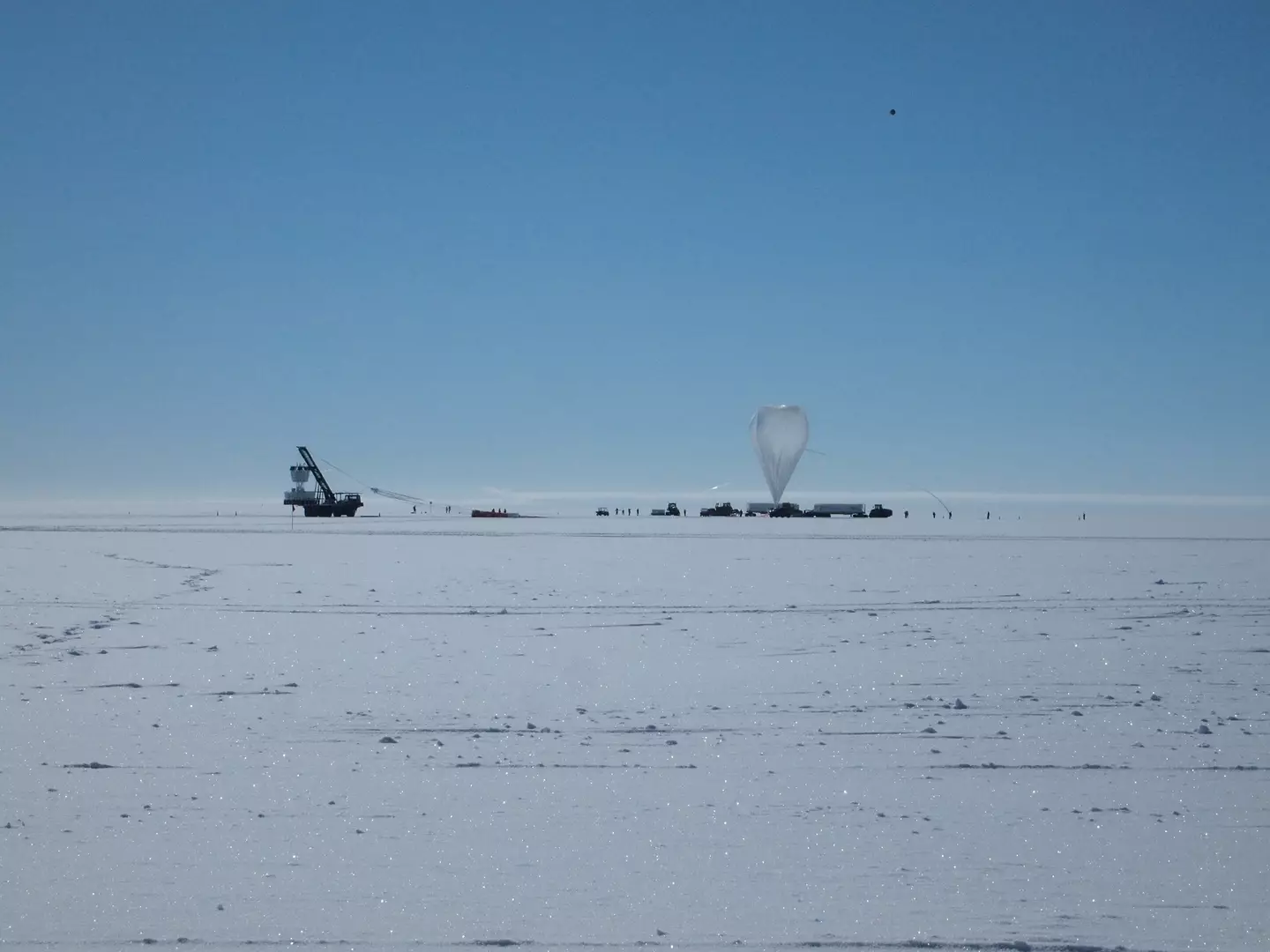

ANITA was placed on a massive balloon to detect radio waves (Stephanie Wissel / Penn State. Creative Commons)
One of the researchers, Stephanie Wissel, said they discovered the radio waves while searching for a particle known as neutrinos.
“The radio waves that we detected were at really steep angles, like 30 degrees below the surface of the ice,” Wissel, an associate professor of physics, astronomy and astrophysics from Penn State, said.
The neutrinos are important for our understanding of the universe and are usually hard to detect. The radio waves should have been undetectable and they would have had to have gone through thousands of kilometers of rock and ultimately been absorbed into them.


Researchers were shocked by the findings (Stephanie Wissel / Penn State. Creative Commons)
Wissel said there could be a billion neutrinos passing through you at any moment, however they don’t interact with us.
“So, this is the double-edged sword problem,” she said. “If we detect them, it means they have traveled all this way without interacting with anything else. We could be detecting a neutrino coming from the edge of the observable universe.”
However, after sending the balloon high above the ice, the researchers cross-referenced their findings with two precious experiments and found that their results did not match up.
This suggests that what they found were not neutrinos, but something different.
Although there have been some theories that what they found was dark matter, it remains a mystery and cannot be confirmed.
In a press release about the findings, Wissel explained: “My guess is that some interesting radio propagation effects occur near ice and also near the horizon that I don’t fully understand, but we certainly explored several of those, and we haven’t been able to find any of those yet either.”
The findings were published by the researchers in the journal Physical Review Letters.
Featured Image Credit: Stephanie Wissel/Penn State
Topics: Antarctica, Space, Science
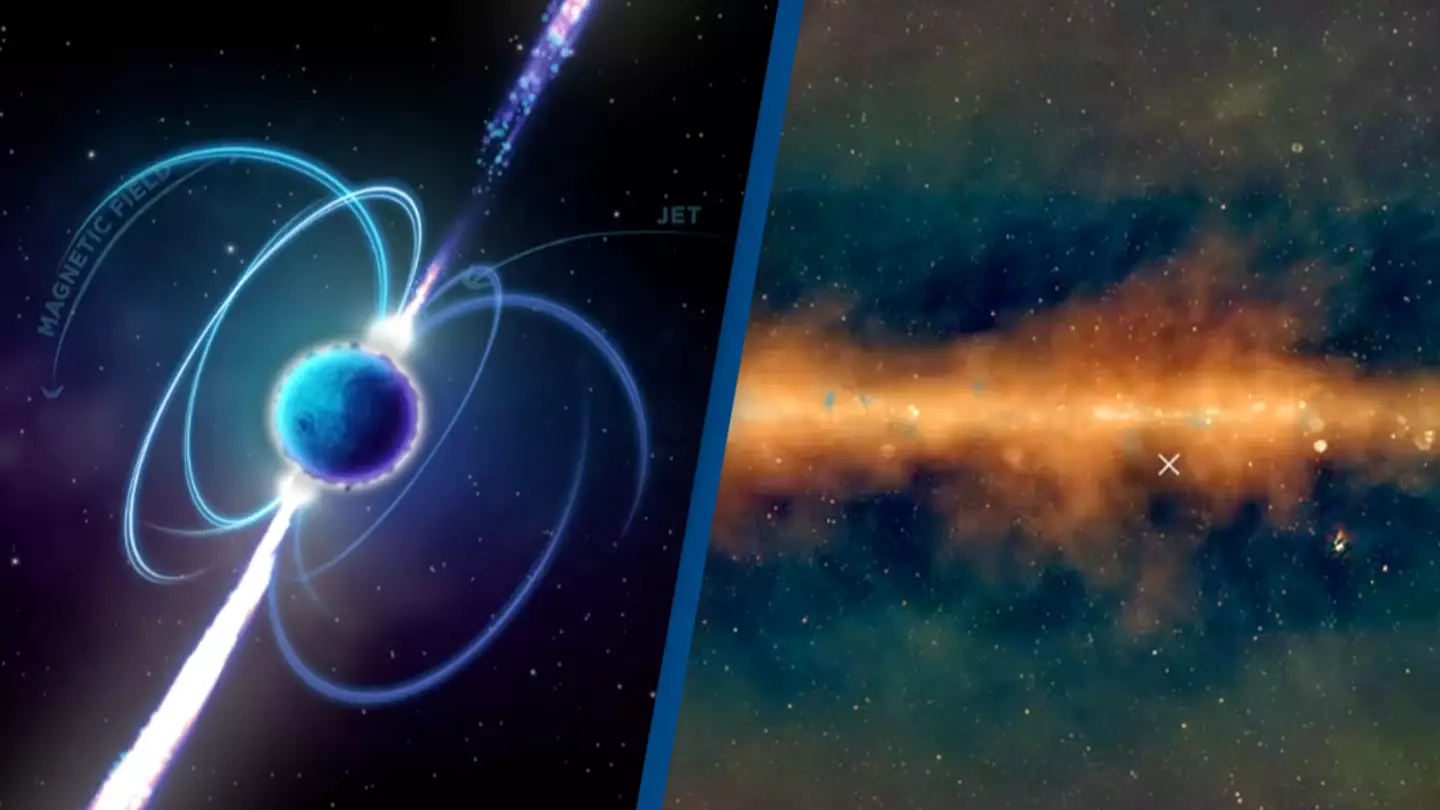

New research has revealed the source of repeated radio signals emulating from space, first picked up two years ago.
In 2022, a team of astronomers picked up on intense bursts of radio waves repeatedly emitting from space, however, they remained baffled as to where it was coming from and what was causing it.
And they’ve since been able to track one of the signals back to its original source.
The original discovery
Tasked with looking for radio sources that were changing, in 2020, undergraduate student Tyrone O’Doherty discovered a ‘particularly unusual source that was visible in data from early 2018, but had disappeared within a few months,’ Stephen Khan explained in an article for The Conversation.
Questioning whether the source – named GLEAM-X J162759.5-523504 – could be an exploded star or a sign of a collision in space, Khan dove deeper into investigating it in 2022.
The team found the source would emit signals every 18 minutes with ‘exactly the same frequency’ – it was ‘like nothing astronomers had ever seen before’.
While identifying the signal was from a natural source and that the source of the radio waves likely had a ‘strong magnetic field’ located ‘less than half a second across, much smaller than our Sun’, astronomers still couldn’t work out exactly where GLEAM-X J162759.5-523504 was coming from – until now.
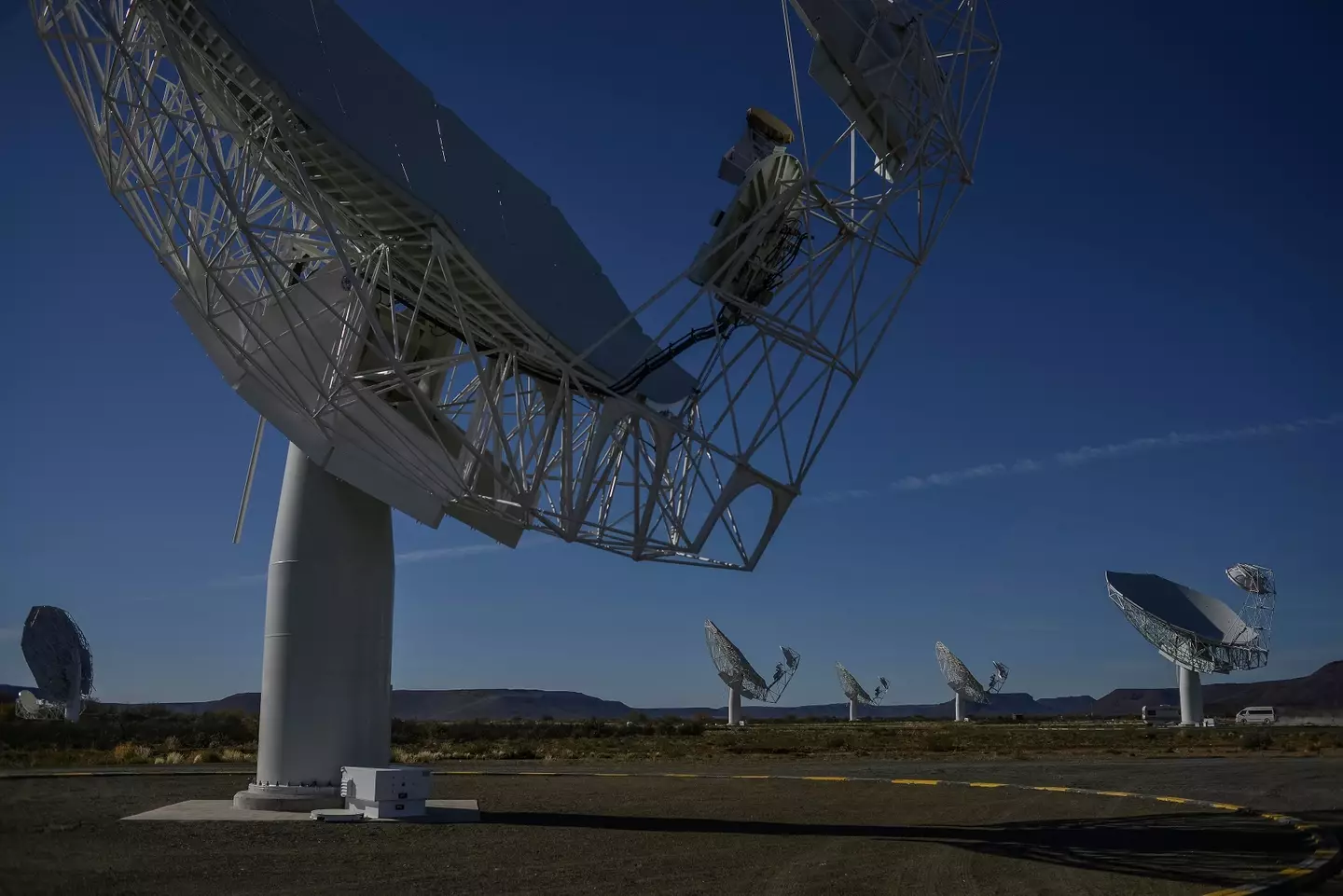

The MeerKAT telescope helped inform the recent discovery (MUJAHID SAFODIEN/AFP via Getty Images)
Tracing the radio signal back to its source
The team began a new project, using the Murchison Widefield Array radio telescope in Western Australia to scan the sky for radio waves – ‘which can observe 1,000 square degrees of the sky every minute’.
The telescope found a new source – GLEAM-X J0704-37 – which pulses out radio waves for a minute every 2.9 hours.
The MeerKAT telescope in South Africa then helped pinpoint where these radio waves were coming from.
And voila! The suspect? A red dwarf star – although, not quite.


The study pointed towards a red dwarf star (Getty Stock Image)
Explanation behind the radio waves
Red dwarf stars are the most common type of star in the Milky Way but aren’t visible to the naked eye.
Combining data from the Murchison Widefield Array and MeerKAT telescopes, the team resolved that it was likely not the red dwarf star itself emitting the radio waves but ‘an unseen object in a binary orbit with it’.
Khan said: “Based on previous studies of the evolution of stars, we think this invisible radio emitter is most likely to be a white dwarf, which is the final endpoint of small to medium-sized stars like our own Sun. If it were a neutron star or a black hole, the explosion that created it would have been so large it should have disrupted the orbit.”
Basically, the red dwarf can produce charged particles similar to those produced by the Sun. These charged particles then hit the white dwarf’s magnetic field, which Khan explained ‘would be accelerated, producing radio waves’.
Featured Image Credit: ICRAR
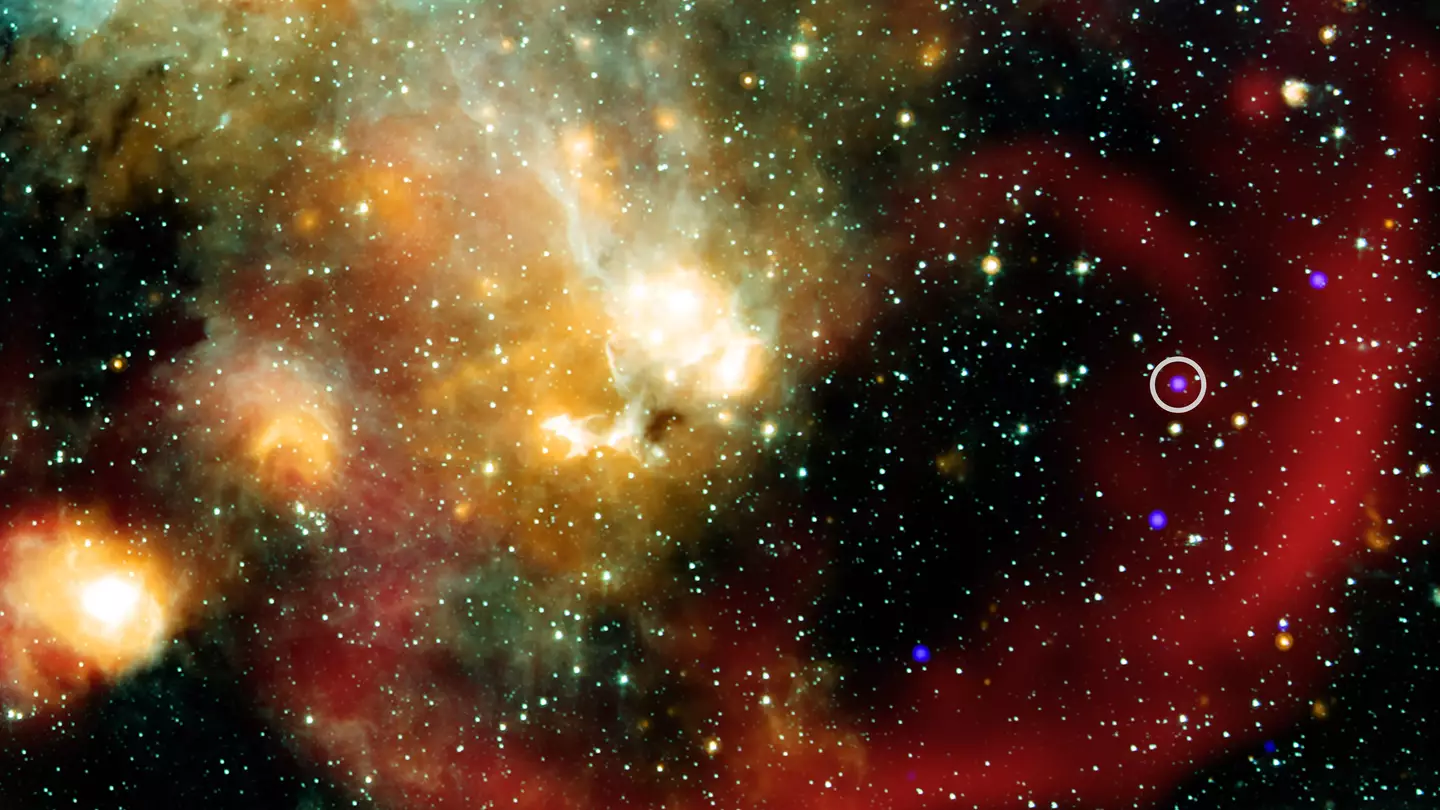

If the vastness of deep space is already enough to make your spine tingle, then you might not enjoy this latest update from NASA.
The US space agency has discovered a mysterious object which is sending signals to Earth every 44 minutes.
Located about 16,000 light-years away, it was uncovered by accident – and the phenomenon is unlike anything astronomers have ever seen before.
This object, called ASKAP J1832-0911, gives off powerful flashes every 44 minutes, with each pulse lasting for two minutes intervals.
ASKAP is part of a newly discovered group of space objects called long period radio transients.
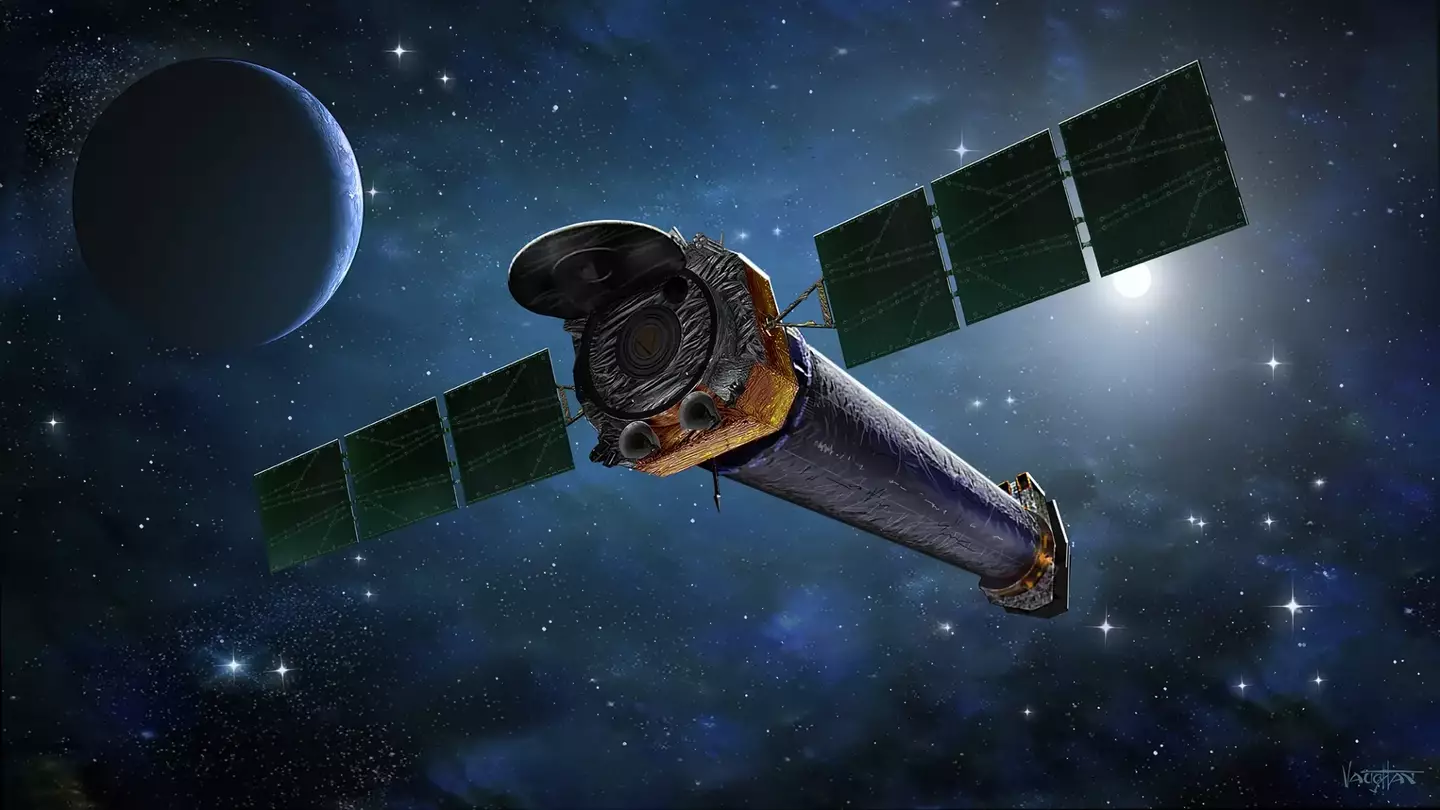

The Chandra X-ray Observatory picked up on the phenomenom (NASA/CXC & J. Vaughan)
These mysterious objects pulse in radio waves every few tens of minutes – a super slow beat compared to pulsars, which are rotating neutron stars observed to have pulses of radiation at very regular intervals.
Scientists using NASA’s Chandra X-ray Observatory – the world’s most powerful X-ray telescope, which is able to detect sources more than 20-times fainter than any previous X-ray telescope – found that ASKAP doesn’t just blink in radio waves, but also pulses in X-rays, on the exact same 44-minute cycle.
This is a first-ever discovery for this kind of object and opens up new questions about what it really is and how it works.
“This object is unlike anything we have seen before,” said lead study author Andy Wang, an astronomer at Curtin University in Perth, Australia.
“ASKAP J1831-0911 could be a magnetar (the core of a dead star with powerful magnetic fields), or it could be a pair of stars in a binary system where one of the two is a highly magnetised white dwarf (a low-mass star at the end of its evolution).”


The unusual object is located 16,000 light years away (Pawel Libera/Getty Images)
He added: “However, even those theories do not fully explain what we are observing.”
What’s even more fascinating is that ASKAP’s signals were found to have dramatically changed within a six-month period.
When scientists checked on it in August, they found that the radio signal had become 1,000 times weaker, and no X-rays were detected at all, compared to its signals given in February.
That sudden change left researchers scratching their heads.
“We looked at several different possibilities involving neutron stars and white dwarfs, either in isolation or with companion stars,” said co-author Nanda Rea of the Institute of Space Sciences in Barcelona, Spain, in a statement. “So far nothing exactly matches up, but some ideas work better than others.”


Circled is the mysterious Askap (NASA/CXC/ICRAR, Curtin Univ./Z. Wang et al)
Oddly, ASKAP also seems to line up in the sky with a supernova remnant – the glowing remains of an exploded star. However, researchers believe that’s just a coincidence.
The supernova debris appears to be in the foreground, like a cloud passing in front of the sun, while ASKAP J1832 is much farther away in the background.
For now, the object remains a cosmic mystery.
“Finding a mystery like this isn’t frustrating,” said co-author Tong Bao of the Italian National Institute for Astrophysics, in a statement. “It’s what makes science exciting.”
Featured Image Credit: NASA/CXC/ICRAR, Curtin Univ./Z. Wang et al
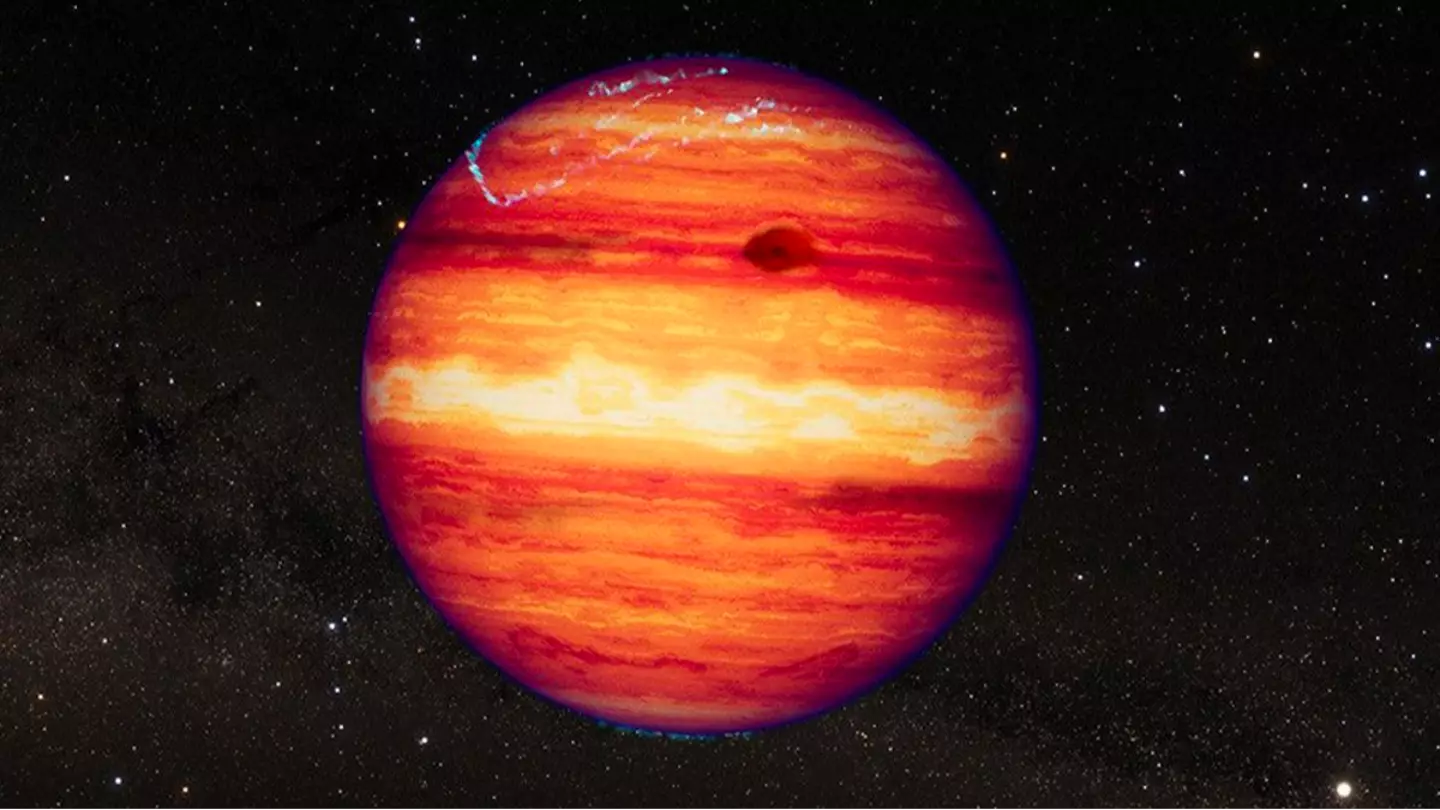

Experts have revealed details of an untethered planet roaming out Solar System, claiming its fluctuating brightness is down to infrared radiation.
A free-floating planetary-mass object, known in scientific circles as SIMP 0136, was previously monitored by ground-based observatories and NASA’s Hubble and Spitzer space telescopes.
Now, however, it’s being more closely looked at through the James Webb Space Telescope – and specialists have made some stark discoveries.
It’s understood that the three-dimensional complexity is thought to have formed due to a ‘complex combination of atmospheric factors’ and that its mass is around 13 times heavier than that of our Solar System’s largest planet, Jupiter (1.899 x 1027 kg).
SIMP 0136 has been described as the ‘ideal target for exo-meteorology’ because of its brightness and its isolation.
.jpg)
.jpg)
The floating planetary mass is known as SIMP 0136 (Nasa)
Due to the lone figure it cuts and the fact it doesn’t orbit a star, it can be observed with little to no light contamination or variability caused by a host star, according to NASA.
The planet, currently located 20 light-years away from Earth in the Milky Way, also has a 2.4-hour rotation period, meaning the Webb Telescope has been able to easily capture images for scientists to analyze.
Allison McCarthy, a doctoral student at Boston University and lead author on a study published today in The Astrophysical Journal Letters, has opened up about studying SIMP 0136.
“We already knew that it varies in brightness, and we were confident that there are patchy cloud layers that rotate in and out of view and evolve over time,” she said of previous research.
“We also thought there could be temperature variations, chemical reactions, and possibly some effects of auroral activity affecting the brightness, but we weren’t sure.”
To understand the untethered object further, the team relied on the Webb Telescope’s Near-Infrared Spectrograph (NIRSpec) and Mid-Infrared Instrument (MIRI) to measure minute changes in brightness over a broad range of wavelengths’.
“To see the full spectrum of this object change over the course of minutes was incredible,” said principal investigator Johanna Vos, from Trinity College Dublin.
“Until now, we only had a little slice of the near-infrared spectrum from Hubble, and a few brightness measurements from Spitzer.”
In published findings, scientists discovered that some wavelengths of recorded infrared light came from patchy clouds made of iron particles.


The planet’s brightness fluctuates from place to place due to infrared radiation (Nasa)
Other wavelengths came from clouds thought to be made of tiny grains of silicate minerals and more from wavelengths originating in ‘bright hot spots’ far above the clouds.
It’s understood SIMP 0136’s brightness is caused by differences in infrared radiation. As the planetary mass rotates, the light level fluctuates and varies from place to place.
Explaining these peculiar findings, McCarthy stated: “Different wavelengths provide information about different depths in the atmosphere.
“We started to realize that the wavelengths that had the most similar light-curve shapes also probed the same depths, which reinforced this idea that they must be caused by the same mechanism.”
According to researchers, these ‘exciting’ results show that molecules such as methane and carbon dioxide can change from place to place over time.
However, Vos added: “We haven’t really figured out the chemistry part of the puzzle yet.
“If we are looking at an exoplanet and can get only one measurement, we need to consider that it might not be representative of the entire planet.”
Featured Image Credit: NASA
Topics: NASA, Science, Space, World News


A study revealed a lake in California conceals an ‘eye popping’ amount of an extremely valuable element.
You clearly shouldn’t judge a lake by its surface because beneath the Salton Sea in southern California there was a monumental surprise in store for scientists.
The largest lake in the state just so happens to be sat on a lithium reserve – which scientists already knew.
However, what they weren’t aware of was just how much of the chemical element was underneath.
In a bid to find out, the Department of Energy (DOE) funded a study which set about researching the Salton Sea to try and analyze just how much lithium was underneath the vast body of water.
California Governor Gavin Newsom previously described the Salton Sea as the ‘Saudi Arabia of lithium mining’ – and well, the study’s findings certainly prove why.


The study revealed estimates were far too low (Getty Stock Images/ Simonkr)
It was previously estimated there lies about four million tons of lithium underneath the lake, however, last year it was revealed there could actually be a staggering 18 million tons of lithium – also referred to as ‘white gold’ due to its value and appearance.
For context, this would be enough to power more than 382 million batteries for electric vehicles.
In light of the new discovery, it makes the California-based reservoir the largest in the world.
As of last year, one metric ton of lithium was worth around $29,000 so, with that figure in mind, Salton Sea could be sat atop of $540 billion worth of goods.
One of the study’s 22 authors, Michael McKibben, a geochemistry professor at the University of California, Riverside, said of the findings: “This is one of the largest lithium brine deposits in the world.
“This could make the United States completely self-sufficient in lithium and stop importing it through China.”
And others in the industry have hailed the finding as undeniably ‘huge’ too.


It’s estimated 18 million tons of lithium lie beneath (Getty Stock Images/ Ed Freeman)
Sammy Roth, climate columnist for the Los Angeles Times, said on KJZZ radio’s The Show: “It’s been known for a long time that there’s a whole bunch of lithium in this super heated underground pool, sort of deep beneath the the southern end of the Salton Sea.”
Roth continued: “There have been companies for decades, actually that have been trying to get lithium out of there, and especially in the last decade as electric vehicles and energy storage on the the power grid become such a big need.
“But this this new report out of the federal government it’s really a sort of eye popping number. They found that there’s potentially enough lithium down there to supply batteries for 382 million electric vehicles, which is more, more vehicles than there are on the road in the United States today.




